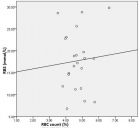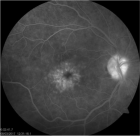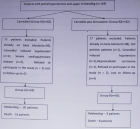About University of Campinas
University of Campinas
Articles by University of Campinas
Implications of entomological evidence during the investigation of five cases of violent death in Southern Brazil
Published on: 11th January, 2018
OCLC Number/Unique Identifier: 7347027028
In homicide cases, knowledge about time of death is important as it directs police investigation towards the discovery of authorship, including or excluding suspects of a crime, and determining nature of death. In Brazil, entomological evidence is still neglected by official forensic organizations and for this reason cases using insects to estimate post-mortem interval (PMI) are still rare. Dipteran specimens collected and analyzed by the staff of Criminalistics Institute (CI) from São Paulo State, Brazil, made it possible to elucidate circumstances of the death, including suspects to the crime scene, in five occurrences involving discovery of cadavers. In all cases, blowflies were collected and were identified as belonging to species Chrysomya albiceps (Wiedemann, 1819), Chrysomya megacephala (Fabricius, 1794), Chrysomya putoria (Wiedemann, 1830), Hemilucilia semidiaphana Rondani, 1850 and Lucilia eximia (Wiedemann, 1819) (Diptera: Calliphoridae), while only in one case Sarcophagidae (Diptera) flies were also collected. PMI estimate was calculated taking into account laboratorial developmental rate data of mentioned species on the environmental temperature on which bodies and insects were exposed, along with comparisons to field research previously conducted in those areas. Based on larval age and behavior, the course of the investigation had changed, pointing to the crime author (case I), as well as the nature of the crime (cases I-III) and associated suspects to the criminal act (cases IV-V). Results show how promising is the use of entomological evidence during investigations of violent deaths.
Effects of Vochysia haenkeana extract on the neuromuscular blockade induced by Bothrops jararaca venom on chick biventer cervicis preparation in vitro
Published on: 8th August, 2017
OCLC Number/Unique Identifier: 7286423140
Vochysia haenkeana extract (Vh-E) was assessed against the neuromuscular blockade induced by Bothrops jararaca venom on chick biventer cervicis (BC) preparation. Pre- and post-venom incubation treatments (Pre-vit and Post-vit) were analysed here. Contractures ACh (110 µM) and KCl (20 mM) were evoked before and after addition of venom without stimulation. Vh-E (600 µg/mL) under Pre-vit was more efficient to neutralize the neuromuscular blockade by venom (40 µg/mL) [72.5±4.6% (venom) vs. 45.2±14% (Vh-E) of blockade, p<0.05, n=4]. Vh-E (600 µg/mL) did not cause significant changes under Post-vit [72.5±4.6% (venom) vs. 63.4±8.2% (Vh-E) of blockade, n=4]. The Pre-vit inhibited the blockade of the contracture to ACh (106±17% of response; n=4) while the Post-vit was able to attenuate the effect of the venom on this contracture (55±5% of response; n=4); related to those contractures to KCl both of treatments with Vh-E attenuated the blocker effect of the venom (62.5±7.7% and 55±5% of response for Pre-vit and Post-vit, respectively; n=4). In conclusion, Vh-E neutralizes partially the neuromuscular blockade in Pre-vit, an effect that can be related to preserved function of “extrinsic” post-synaptic receptors, by measured contractures in response to ACh. The myotoxicity of the venom was significantly reduced by Vh-E in both, Pre-vit and Post-vit, by measured contractures in response to KCl.
The protective potential of Carbonic Anhydrase VI (CA VI) against tooth decay in children: A systematic review of the literature
Published on: 2nd August, 2022
Carbonic anhydrase VI (CA VI) catalyzes the reversible hydration of carbon dioxide in saliva with possible pH regulation, taste perception, and tooth formation effects. Objective: The aim of this work was to undertake a systematic review regarding the relationship between the expression/activity of CA VI in saliva and in dental biofilm and caries experience. Study design: Five databases were searched until February 2020. The composition was based on the PRISMA statement and on the PICOS model. First author, year, subject characteristics, analysis performed, outcome, measures & variables were extracted. The used terms were “carbonic anhydrase VI”, “saliva”, “dental biofilm” and “dental caries”.Results: Five studies in the English language were selected for this systematic review and the main discussed topics were the expression/activity of CA VI in saliva and/or in the dental biofilm of children, and its relationship with dental caries. Conclusion: Salivary carbonic anhydrase plays an important role in the caries dynamics process since there is an association between the expression/activity of CA VI in saliva and the experience of caries. Thus, this protein can predict the risk of dental caries in young patients.

HSPI: We're glad you're here. Please click "create a new Query" if you are a new visitor to our website and need further information from us.
If you are already a member of our network and need to keep track of any developments regarding a question you have already submitted, click "take me to my Query."


























































































































































